During the Pandemic, a Fall Guys game went viral on the internet! What few people know is that these types of games, popular on various reality TV shows around the world, originated in Japan with Takeshi's Castle.
Takeshi's Castle or Fūun! Takeshi-jō [風雲!たけし城] is a Japanese reality show that premiered in 1986 featuring comedian Takeshi Kitano. The show's name literally means turbulence at Takeshi's Castle.
Known as Beat Takeshi, the comedian is a count who owns a castle full of difficult challenges for volunteer players. The game became a worldwide success having several copies all over the world.
Table of Content
How did Takeshi's Castle work?
The original program involves 86 to 142 competitors in which General Tani (Hayato Tani) "forced" in a series of physical challenges, in some aspects similar to It's a Knockout, eliminating many of the competitors. Similar to Fall Guys, being a true バトルロイヤル.
Each show ended with a "Confronto Final" where Count Takeshi (Kitano) faces the remaining competitors. In the first episodes, the players needed to invade the castle and create a short-range water cannon attack.
Later episodes introduced carts with paper rings and eventually lasers and light-sensitive targets. If the competitor's weapon penetrated the paper ring or hit the sensor on Takeshi's cart, they took the castle and won.
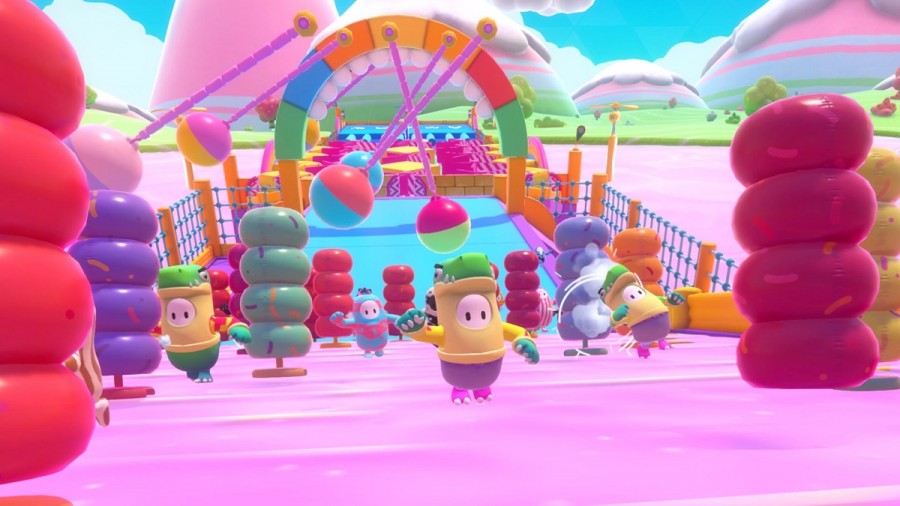
During the water pistol version, if Takeshi was defeated, all surviving players split the prize among themselves. During the laser gun version, the player who stopped Takeshi won 1 million yen (around $8,000 at the time).
The series featured extensive landscaping of a fixed campus at the Midoriyama (Green Mountain) studios owned by TBS, which included large artificial lakes and extensive permanent obstacles in Yokohama, Japan.
The final regular episode aired on April 14, 1989 followed by 4 one-off specials until October 19, 1990. A revival special took place on April 2, 2005 and featured the Lake of the Dragon God and the Strait of Gibraltar.
In the last episode of Takeshi Castle released on October 19, 1990, it had the incredible participation of 1000 competitors commanded by General Tani. During 127 battles, participants managed to defeat Takeshi Castle only 8 times.

The End of Takeshi's Castle
As soon as the final battle ends, fireworks explode over Takeshi Castle as if to praise the winning side.
If the attacking army is defeated, it shows Captain Tani fleeing, leaving a message of defeat, and Takeshi's troops on the walls shouting with Takeshi at the top of the walls, followed by a fight scene of the challenger with the competitors and the personnel rolling.
If the attacking forces win, the competitor who hits Takeshi's tank target receives 1 million yen from Captain Tani, and then he or she raises a shout with the other competitors who made it to the karting game and connects to the scenario of challenger battle.
In both cases, a sign was inserted announcing the call for new challengers written: Let's play with Takeshi-chan! The narrator's final sentence is basically "Thank you to all the people who participated".
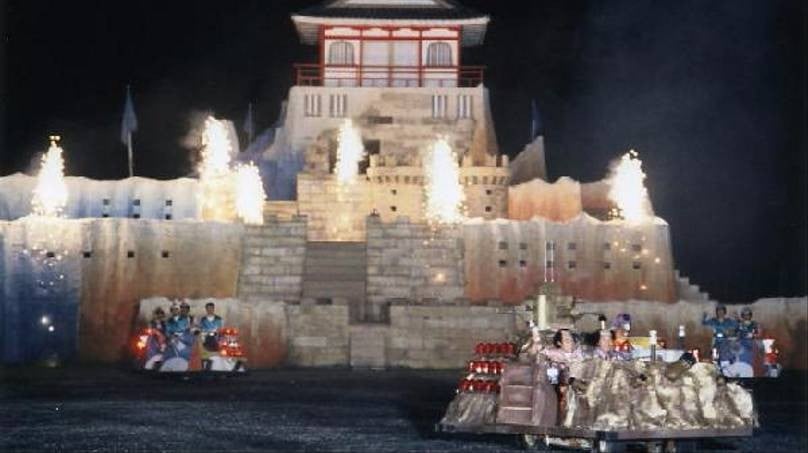
The different Gymkhana Games
I remember playing a game on the Nintendo Wii called WipeOut, in which I even thought that the Brazilian TV competitions were based on this American reality show (my mistake). Now I know that each country has its own scavenger hunt show.
Several Asian television channels replicated Takeshi's Castle exactly, with the same characters, the same system, with a castle and with multiple simultaneous participants. You can even think that the Program is Japanese, because even the signs are in the language.
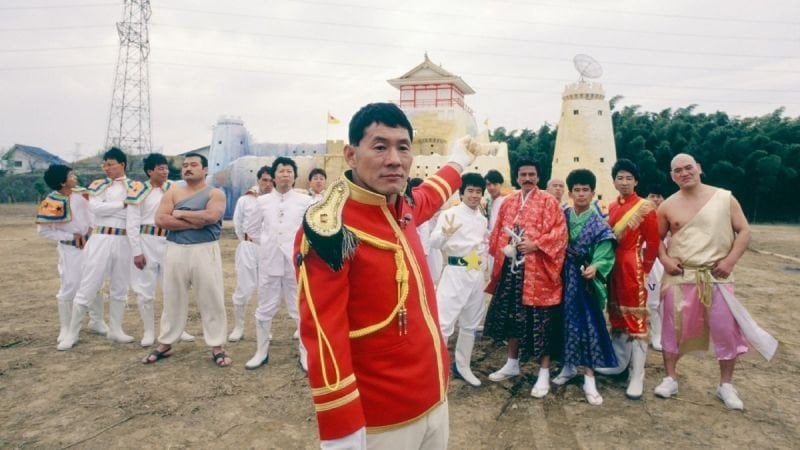
Various other shows have tried to use the premises of Takeshi Castle, we have the famous Ninja Warrior, followed by the floor is lava available on Netflix and many others. Do you know any other similar show? Leave in the comments...
Most of them consist of challenges where the loser falls into the water or mud if he makes a mistake. Many of the challenges are similar, like the one to spin in Fall Guys. There are hundreds of different Takeshi Castle games and challenges.
The success of these competitions was great as there were toys based on the Program in Japan. Some political correctors questioned the show because of its warlike atmosphere, and the laughter when players lost.
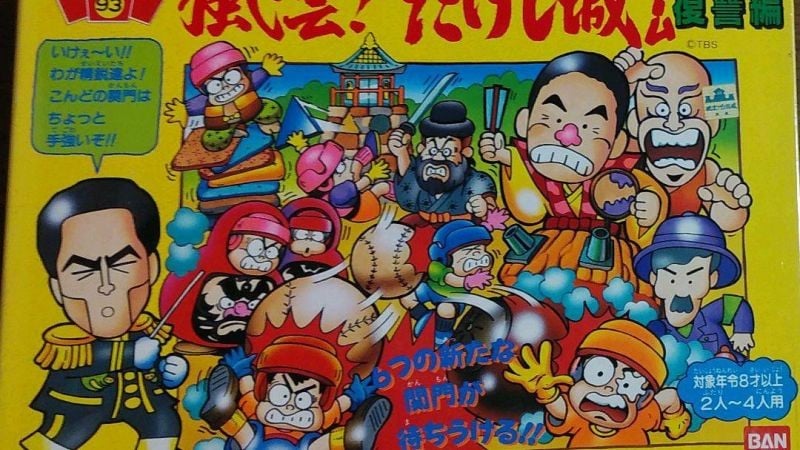
Takeshi Castle's Main Challenges
Despite many challenges from Olimpíadas do Faustão and other programs with gincanas being based on the games from Takeshi's Castle, the English names do not correspond to the Japanese names. This is because the Japanese TV program follows a script, so the challenges have names related to the castles and scenarios of the game.
border wall [国境の壁] - Cross a high wall of 2 meters or more within the time limit. There is a drop on both sides of the wall.
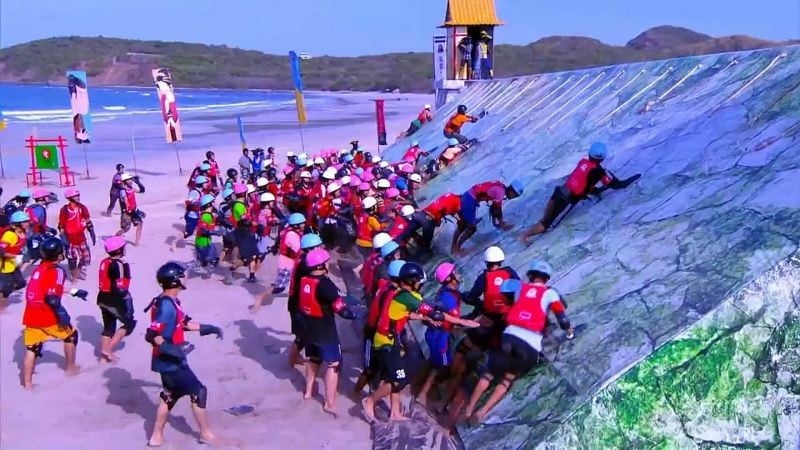
Here's a list of Takeshi's games and challenges with his name in Japanese:
- Edge Slope [国境の坂]
- Border Wall [国境の関所]
- Border perfection [国境のパーフェクション]
- First Village [第一砦]
- Ryujin Pond [竜神池]
- Devil's House [悪魔の館]
- Second Strong [第二砦]
- Strait of Gibraltar [ジブラルタル海峡]
- Man-Eating Cave [人喰い穴]
- The Longest Garden [ザ・ロンゲストヤード]
- Adventure Zone [アドベンチャーゾーン]
- The Freedom Wall [自由への壁]
- The Long Wall of Freedom [遥かなる自由への壁]
- This is a Ball, Run! [これは玉RUN]
- Punk boy [どんぶらこっこ]
- Sumo Wrestler [すもうでポン]
- The condor will fly away [コンドルは飛んで行く]
- Pong with mushrooms! [キノコでポン!]
- With calligraphy [書道でポン]
- It's a perfect match [当たって完パイ]
- Heaven and Hell [天国と地獄]
- Castle War [城内戦]
- Cart Battle [カート戦]
